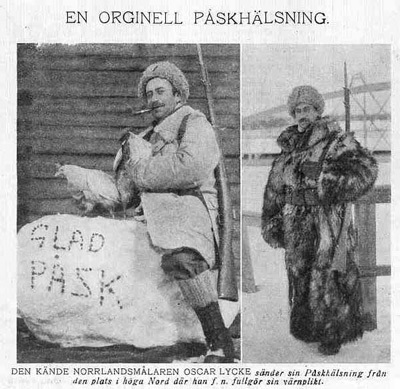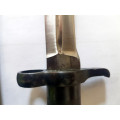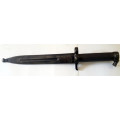M96 Swedish Mauser Bayonet *Collectors Item*
Check my rate
| Main centres: | 1-3 business days |
| Regional areas: | 3-4 business days |
| Remote areas: | 3-5 business days |
Product information


History
The M96 or ‘Swedish’ Mauser was a longer variant of the M94, designed by Mauser for the Swedish military. Early versions were manufactured by Mauser, but the contract specified that only supplied Swedish steel could be used in their construction. Sweden soon manufactured their own rifles at the Carl Gustav factory, and later in smaller numbers at Husqvarna.
The M96 bayonet served the Swedish military through more than 80 years and two service rifles. The Swedes liked it so much (and had so many in storage) that they carried it over from the 19th-century M96 to their first postwar autoloader. The AgM42 ‘Ljungman’ carried the M96 bayonet from the late 1940s until the rifle’s retirement in 1964, and some Swedish rear-echelon support units even carried the bayonet (still attached to the incredibly-obsolete M96) until 1983.
Design
The M96 bayonet has a spear point and a sturdy 8.25″ blade, typically sharpened only on the forward edge. The barrel band is integral to the hilt, and the hollow steel handle has a spring-loaded lug for mounting to a rifle.
The knife has a hand-filling grip and good balance, and the excellent proportions of the blade give it the appearance of a miniature Roman gladius. The angled mounting lug near the pommel also aids in gripping and retention.
The blade has a split tang just over an inch long, which threads around a plug inside the top of the handle. They don’t really disassemble, but somebody managed to take one apart once to see how it was assembled. Despite the apparent weakness of a threaded partial-tang blade, M96 blades are not known to break off from their handles. Bayonet practice puts extreme stress on blades and mounts, and many M96 bayonet scabbards are dented and beaten from years of training abuse but the blades are still firmly attached.
Metallurgy
Almost all M96 bayonets were manufactured by Carl Gustav, and all of them used exceptionally high-grade Swedish steel regardless of which factory they came from. I’d be fascinated to know the precise chemical and structural metallurgy (I don’t) but it’s been shown that Swedish iron ores contained serendipitous traces of chromium, vanadium, molybdenum and manganese.
Starting in the mid-1800s, Swedish smelters even used electric furnaces which introduced fewer impurities than coal- or gas-fired processes. The result was an exceptionally strong and corrosion-resistant weapons-grade steel.
The natural chromium and vanadium content makes this Swedish steel semi-stainless steel right out of the forge, which is why early-production M96 rifle bolts still gleam brightly ‘in the white’, despite being un-blued through more than a century of exposure to oxygen



